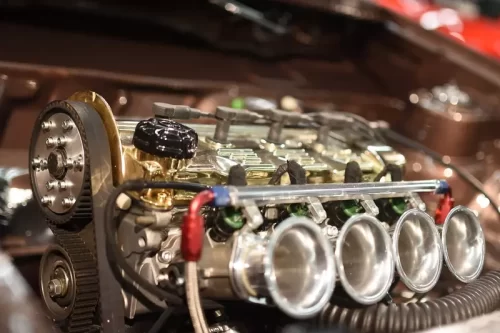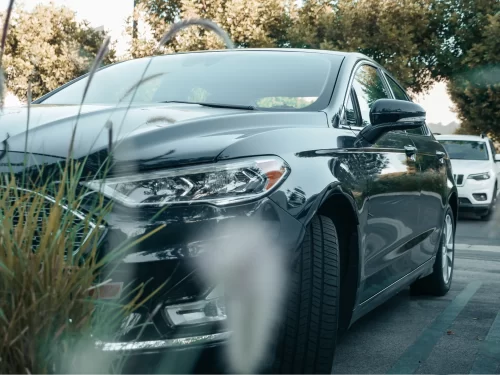
6 Tips to Protect and Preserve Your Windshield and Wipers
Issue 17 • Engine & Transmission Tip You Can Do A LOT To Protect and Preserve Your Windshield and Wipers Nobody Likes Bug Splatter. Bleck!
Engine tuning adjusts the performance of your vehicle’s engine and drivetrain by modifying the behavior of varying engine components. The majority of these “tweaks” are done via the ECU, (Engine Control Unit), sometimes referred to as the ECM (Engine Control Module) Commonly, adjusting the ECU is done to increase performance. But it can also be used to improve fuel economy and prolong the life of an engine.
Tuning your engine can include adjustments or modifications to ignition, fuel delivery, and more.
Setting the idling speed, air-fuel mix in the carburetor, spark plug and distributor point gaps, and ignition timing were common maintenance for older cars, and essential “tweaks” for performance or racing ones.
Modern engines are equipped with electronic ignitions and fuel injectors, so controlling them via a computer system is not only logical, it offers more control and faster/easier adjustments.
Automobile manufacturers didn’t develop this technology for enthusiasts. Rather, it allows a car maker to produce fewer engine models and put them in a wider variety of vehicles. An ECU can be configured to make an engine in a sporty car perform aggressively, while that same engine, in a crossover SUV, would be configured for on-demand power while favoring general fuel economy.
Unfortunately, virtually all production vehicle ECUs are “locked” to prevent the casual owner from getting a gadget off eBay and screwing up their engine settings so badly it won’t even start.
Fortunately for the wise, you can purchase an unlocked replacement ECU, often referred to as a “Piggyback ECU”, which fully unlocks the customization of your engine and related systems performance.
There are many, many ways to unlock your vehicle’s potential by “tuning” it, but this is NOT a weekend-warrior project. If you want to reap the benefits, you must learn what to do, and how to do it successfully.
There are three basics of vehicle performance, 1. Acceleration. 2. Steering. 2. Deceleration. The right balance between these three rivals will improve your overall satisfaction with your vehicle while adhering to the golden rule of car modifications… safety first.
Remember, if you increase the engine output, it will affect turning and even stopping. That being the case, you may need to install better-quality parts related to your steering and braking. Also, there are mechanical-only paths to better engine performance, like increasing airflow, adding a turbocharger, more aggressive camshaft lobes, and on, and on.
 The basic operation of tuning your engine via the ECU is to rewrite the existing set of instructions the ECU sends to various components, and there are hundreds of them, to maintain or enhance the performance of your vehicle. This process is called “remapping”. To illustrate how complex an ECU map could be, some engines ECU are programmed to detect low-quality gas and adjust the mixture of gas and air to prevent stalling and potential damage to the engine.
The basic operation of tuning your engine via the ECU is to rewrite the existing set of instructions the ECU sends to various components, and there are hundreds of them, to maintain or enhance the performance of your vehicle. This process is called “remapping”. To illustrate how complex an ECU map could be, some engines ECU are programmed to detect low-quality gas and adjust the mixture of gas and air to prevent stalling and potential damage to the engine.
Remapping applies to the ECU “chip”. This process consists of creating a custom map based on the needs of your car. This map is then uploaded to your car’s ECU. While this may work as simply as stated above on some vehicles, other manufacturers employ failsafe features in their ECUs to prevent tampering with the installed maps. But tinkerers also include programmers, so as ECUs became more complicated, and encrypted, the need for “piggyback” or secondary ECUs emerged, and so did Outboard ECUs with Interceptor Harnesses. Sounds space-aged right? It is. And in that vein, the more you bolt on, the more things can go wrong.
All of that considered, our recommendation to the fierce DIYer (Do-It Yourself-er) is… don’t.
If you REALLY want to tune your ECU, and your whole vehicle, go to a performance shop for the first round. Doing it right requires a lot of specialized equipment, and more importantly knowledge and experience.
What’s that going to cost you? Please note first, that there can be expenses like additional parts required for a tune to be successful. The amount mentioned here does not include any of that. But to get you percolating, Tuning rates from several reputable shops willing to post them online, range from $550 to a little over $800, all of which include “dyno” pulls, which rate your performance under load conditions.
There is just so much information about this process that we urge you to do your homework before even contemplating tuning your engine.
Let’s consider this issue an “introduction” to a feature of your car you may never have known of, like the compartment in the back of a Saab’s glove box, that acts as a mini fridge for 2-3 bottles of water.
While the ECU is the brain of the central nervous system of your car, it can also be the gremlins under the hood if it begins to fail. In a previous issue, we described how to check your engine for potential issues. Shame on us for not mentioning the ECU. But it does have the potential to fail. Not a big one, but still an item to check with your OBD2 scanner from time to time.
 What is an ECU?
What is an ECU?ECU stands for Engine Control Unit (Also referred to as the Engine Control Module (ECM), and even the Powertrain Control Module (PCM). Be sure to know which term your vehicle manufacturer uses.
According to car computer exchange, “Reprogramming your ECM is necessary for keeping your vehicle control software up to date. Much like the operating system on your home computer, improvements in software are often made by your car’s manufacturer. The software can be updated simply by downloading and installing the latest version.”
The truth is that ECU remapping is a much safer solution than mechanical tuning. Primarily because it’s so easy to undo. However, there are important aspects to the proper evaluation of your car’s current performance, and expectations you might have. ECU tuning is therefore based on the best possible adjustment of parameters to the potential of the car, so as to increase the engine’s power without adversely affecting its safe operation.”
The short answer is yes. The long answer is – yes, but it’s complicated, very complicated. You can do a lot of research, and watch a ton of online videos, before buying your first remap tool and plugging it into your car, but if you grab a remap file off an illegal torrent site and transfer it to your car to cut corners, well, see ya at the shop.
Oh, you’re just trying to keep me from having fun with my car. How badly can I hurt it?
Well, you can permanently fork it up for one thing. On the most-serious side, you can definitely do irreversible damage to the engine. On the lighter side, you can disable your immobilizer feature and render your key unusable. You will most certainly invalidate any warranty, from the manufacturer or aftermarket. And, did we mention, you can seriously fork it up?

Issue 17 • Engine & Transmission Tip You Can Do A LOT To Protect and Preserve Your Windshield and Wipers Nobody Likes Bug Splatter. Bleck!

Issue 9 • Engine & Transmission Tips Tell-Tale Signs, It’s Time For A Transmission Rebuild or Replacement NOTE: For editorial purposes, the information below applies

Part 2 – The Factory Five Mk4 Roadster This kit car is a dead-on replicate of a 1965 Shelby Cobra Project: 1965 Shelby Cobra Replica

Issue 33 • Engine & Transmission Tips Fall is here! Make sure you’re ready for a bad-weather driving experience October is just around the corner

The Ford 3.5L engine is a true testament to the engineering prowess of the Ford Motor Company. Over the years, Ford engineers have continually pushed

Issue 28 • Engine & Transmission Tips • Part 2 Which Should You Do? Replace Your Engine Or Your Entire Car? Welcome to Part 2